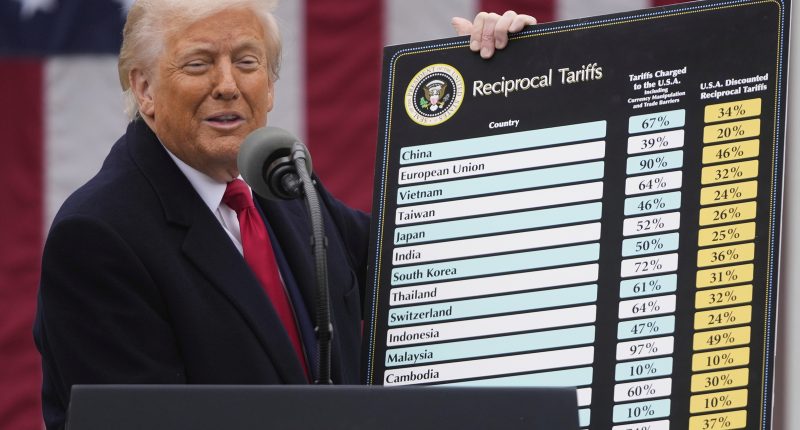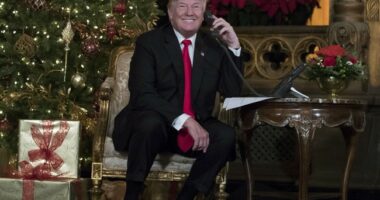Share this @internewscast.com
WASHINGTON — President Donald Trump announced a 25% tariff on imports from Japan and South Korea on Monday, aiming to address ongoing trade disparities with these key Asian allies.
Trump made the tariff announcement, set to take effect on August 1, through letters posted on Truth Social, directed at the leaders of both nations. The correspondence cautioned against retaliation through higher import duties, warning that any such actions would lead to further tariff hikes by the Trump administration.
“Should you choose to increase your tariffs, any percentage you raise will simply be added to the 25% we are already imposing,” Trump informed Japanese Prime Minister Shigeru Ishiba and South Korean President Lee Jae-myung in his letters.
The letters were not the final word from Trump on tariffs, so much as another episode in a global economic drama in which the U.S. president has placed himself at the center.
Trump has declared an economic emergency to unilaterally impose the taxes, suggesting they are remedies for past trade deficits even though many U.S. consumers have come to value autos, electronics and other goods from Japan and South Korea. But it’s unclear what he gains strategically against China – another stated reason for the tariffs – by challenging two crucial partners in Asia who could counter China’s economic heft.
“These tariffs may be modified, upward or downward, depending on our relationship with your Country,” Trump wrote in both letters.
Because the new tariff rates go into effect in roughly three weeks, Trump is setting up a period of possibly tempestuous talks among the U.S. and its trade partners to reach new frameworks.
Trump initially sparked hysteria in the financial markets by announcing tariff rates on dozens of countries, including 24% on Japan and 25% on South Korea. In order to calm the markets, Trump unveiled a 90-day negotiating period during which goods from most countries were taxed at a baseline 10%.
The 90-day negotiating period technically ends before Wednesday, even as multiple administration officials and Trump himself suggested the three-week period before implementation is akin to overtime for additional talks.
Trump is relying on tariff revenues to help offset the tax cuts he signed into law on July 4, a move that could shift a greater share of the federal tax burden onto the middle class and poor as importers would pass along much of the cost of the tariffs.
His trade framework with Vietnam is clearly designed to box out China from routing its America-bound goods through that country, while the quotas in the United Kingdom framework would spare that nation from the higher tariff rates being charged on steel, aluminum and autos.
The United States ran a $69.4 billion trade imbalance in goods with Japan in 2024 and a $66 billion imbalance with South Korea, according to the Census Bureau.
Copyright © 2025 by The Associated Press. All Rights Reserved.

















